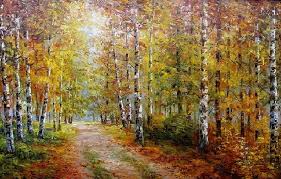oriental styles
PRINT. CLASSIFICATION AND VARIETIES (part 2)
 Lavis (from Fr. lavis – wash) – a kind of aquatint. Known since the 1780s. The drawing is applied by needle etching. The tonality is obtained by etching with acid, which is applied to the board with a brush. The boundaries of the tone spot are sharply defined. The print of Lavis resembles a work executed in watercolor. Lavis is very close to aquatint in terms of its external visual characteristics, but differs from it in watercolors of a tone spot, softness and fuzziness of outlines. Like aquatint, Lavis is used in combination with other etchings, for example, with a dry needle. The technique allows you to get no more than 30 quality prints from one board.
Lavis (from Fr. lavis – wash) – a kind of aquatint. Known since the 1780s. The drawing is applied by needle etching. The tonality is obtained by etching with acid, which is applied to the board with a brush. The boundaries of the tone spot are sharply defined. The print of Lavis resembles a work executed in watercolor. Lavis is very close to aquatint in terms of its external visual characteristics, but differs from it in watercolors of a tone spot, softness and fuzziness of outlines. Like aquatint, Lavis is used in combination with other etchings, for example, with a dry needle. The technique allows you to get no more than 30 quality prints from one board.
Zuev Alexey. Lada. Molodetsky Kurgan – Reservazh Reservazh (from French réservage) is a type of etching. The reserve first appeared in France in the second half of the 19th century. Continue reading
HISTORY OF THE ORIGIN AND DEVELOPMENT OF STAINED-GLASS ART (part 2)
 Let us imagine for a moment the decoration of these choirs: painted walls and ceilings, glazed tiled stoves, patterned carpets and carved shutters … In the interiors of rich chambers, only windows could remain colorless spots. Stained-glass windows — multicolored glasses and mica plates assembled in the pattern — helped to solve the problem, complementing the atmosphere of the luxurious life of the then aristocracy. “The colored light that now penetrated through the glass and mica stained-glass windows created a special, joyful mood, made the interior cozy, complemented the beauty of the brightly-patterned decoration of the room.” Continue reading
Let us imagine for a moment the decoration of these choirs: painted walls and ceilings, glazed tiled stoves, patterned carpets and carved shutters … In the interiors of rich chambers, only windows could remain colorless spots. Stained-glass windows — multicolored glasses and mica plates assembled in the pattern — helped to solve the problem, complementing the atmosphere of the luxurious life of the then aristocracy. “The colored light that now penetrated through the glass and mica stained-glass windows created a special, joyful mood, made the interior cozy, complemented the beauty of the brightly-patterned decoration of the room.” Continue reading



